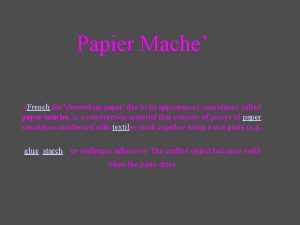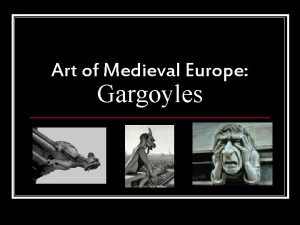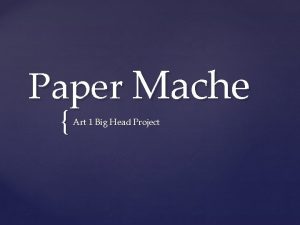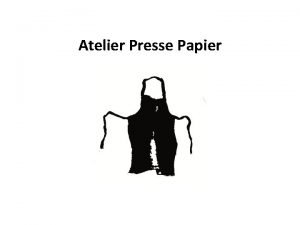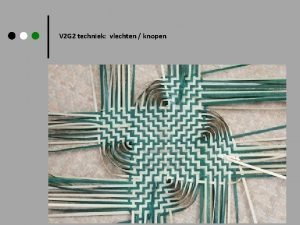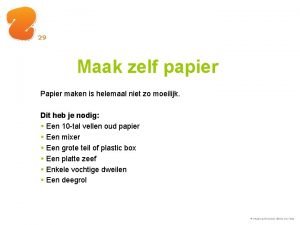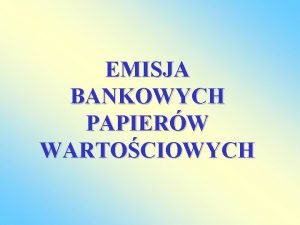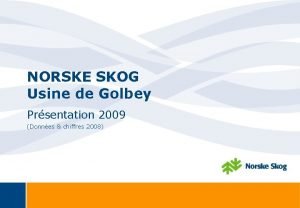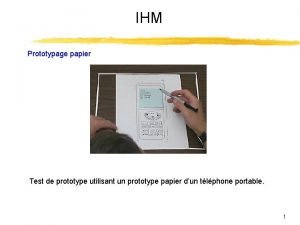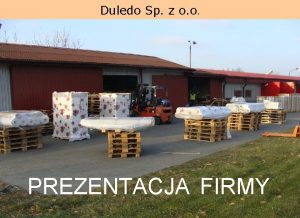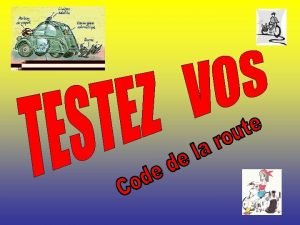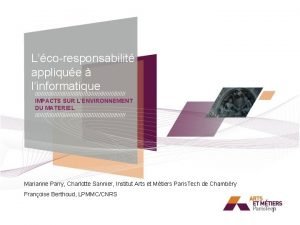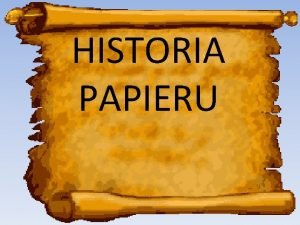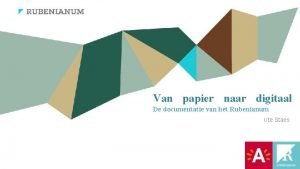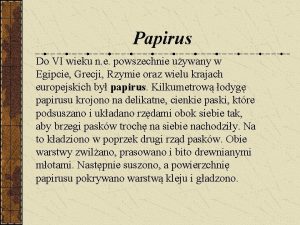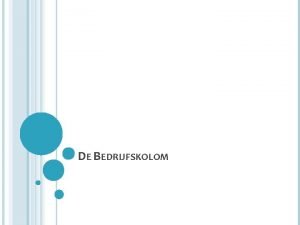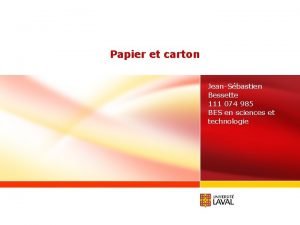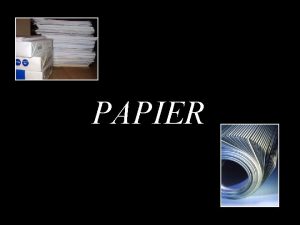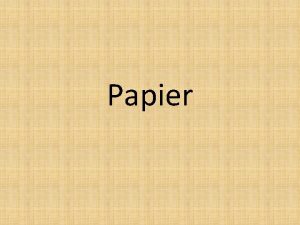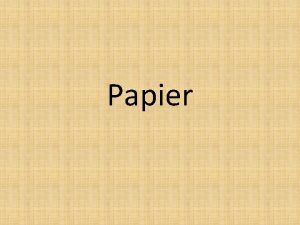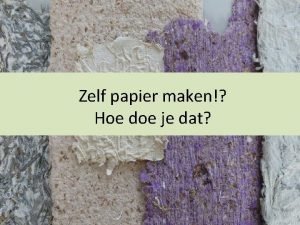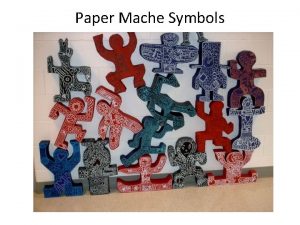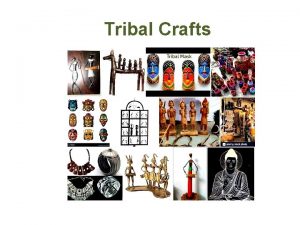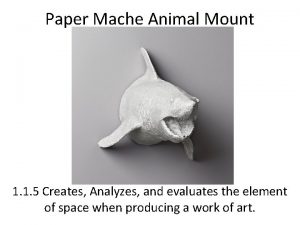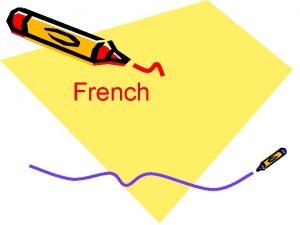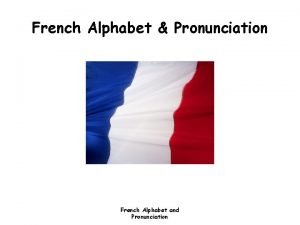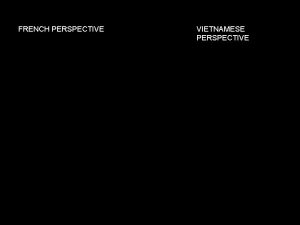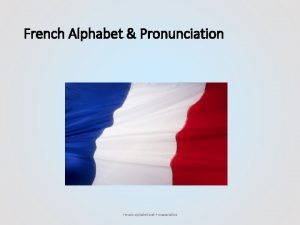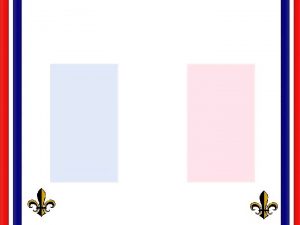Papier Mache French for chewedup paper due to












![An alebrije (pronounced [aleˈβɾihe]) is a brightly-colored Mexican folk art sculptures of fantastical animal-like An alebrije (pronounced [aleˈβɾihe]) is a brightly-colored Mexican folk art sculptures of fantastical animal-like](https://slidetodoc.com/presentation_image/5c326e946bb29d4513e001b883feb5dc/image-13.jpg)



















- Slides: 32

Papier Mache’ (French for 'chewed-up paper' due to its appearance), sometimes called paper-mâché, is a construction material that consists of pieces of paper, sometimes reinforced with textiles stuck together using a wet paste (e. g. , glue, starch, or wallpaper adhesive). The crafted object becomes solid when the paste dries.


Sculpture is three-dimensional artwork created by shaping or combining hard and or plastic material, sound, and or text and or light, commonly stone (either rock or marble), metal, glass, or wood. Some sculptures are created directly by finding or carving; others are assembled, built up and fired, welded, molded, or cast. Sculptures are often painted [1]. A person who creates sculptures is called a sculptor.




In sculpture, an armature is a framework around which the sculpture is built. This framework provides structure and stability, especially when a plastic material such as wax or clay is being used as the medium. When sculpting the human figure, the armature is analogous to the major skeleton and has essentially the same purpose: to hold the body erect





![An alebrije pronounced aleˈβɾihe is a brightlycolored Mexican folk art sculptures of fantastical animallike An alebrije (pronounced [aleˈβɾihe]) is a brightly-colored Mexican folk art sculptures of fantastical animal-like](https://slidetodoc.com/presentation_image/5c326e946bb29d4513e001b883feb5dc/image-13.jpg)
An alebrije (pronounced [aleˈβɾihe]) is a brightly-colored Mexican folk art sculptures of fantastical animal-like creatures. While Pedro Linares first used the term to describe his papier mache creations, it is now commonly used in reference to the Oaxacan woodcarvings popularized by Manuel Jimenez

The Origin of Alebrijes Pedro Linares started out as a common papier mache artist who eked out a living on the outskirts of Mexico City by making traditional piñatas, carnival masks, and Judas dolls for local fiestas. In the 1930 s, he broke from tradition and started creating elaborate decorative pieces that represented imaginary creatures he called alebrijes. Inspired by a dream when he fell ill at age 30, [1] these papier mache sculptures were brightly-painted with intricate patterns and frequently featured wings, horns, tails, fierce teeth, and bulgy eyes


















Don’t forget about BALANCE
 French term for chewed up paper
French term for chewed up paper Paper mache gargoyle
Paper mache gargoyle Paper mache ice cream
Paper mache ice cream Big head art project
Big head art project Ich mache karate
Ich mache karate Nascita di sparta
Nascita di sparta Due piccole sfere identiche sono sospese
Due piccole sfere identiche sono sospese Ha quattro angoli e quattro lati
Ha quattro angoli e quattro lati Procedural vs substantive due process
Procedural vs substantive due process Papier wartościowy kojarzony z państwem
Papier wartościowy kojarzony z państwem Smartschool hoedjes van papier
Smartschool hoedjes van papier Atelier presse papier
Atelier presse papier Papier vlechten voorbeelden
Papier vlechten voorbeelden Presse papier maken
Presse papier maken Verdelingsconstante
Verdelingsconstante Emisja bankowych papierów wartościowych
Emisja bankowych papierów wartościowych Fabrication papier
Fabrication papier Prototype ihm
Prototype ihm Papier mach
Papier mach Vaste stoffen blussen
Vaste stoffen blussen Duledo
Duledo Prenez une feuille de papier
Prenez une feuille de papier Fabrication papier
Fabrication papier Papirus
Papirus Zelfontbrandingstemperatuur papier
Zelfontbrandingstemperatuur papier Van papier naar digitaal
Van papier naar digitaal Historia papieru prezentacja
Historia papieru prezentacja Vybrd
Vybrd Gruby miękki papier chłonący ciecze
Gruby miękki papier chłonący ciecze Pliage ballon
Pliage ballon Bedrijfskolom
Bedrijfskolom Crayon de papier
Crayon de papier Fabrication papier
Fabrication papier
